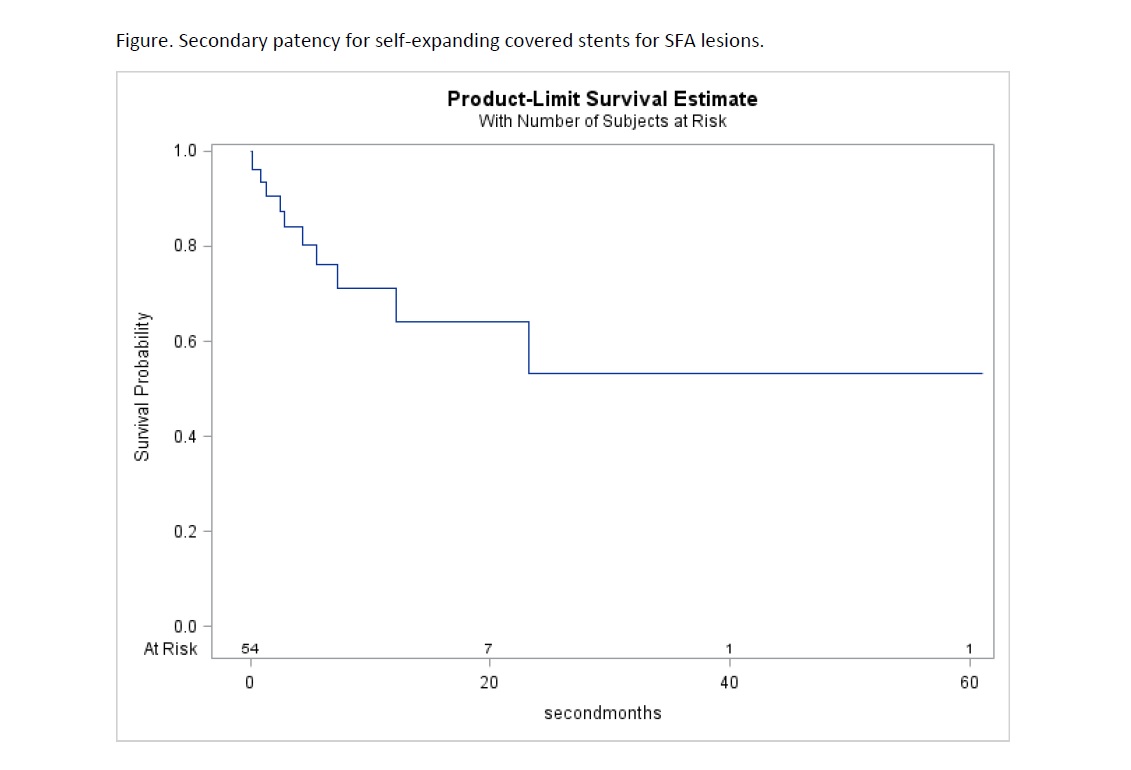|
Back to 2016 Karmody Posters
Self-expanding Covered Stents for the Treatment of Femoropopliteal Lesions
Laila Yazdani, BS, Wande B. Pratt, MD, MPH, Gerald R. Fortuna, MD, Kristofer M. Charlton-Ouw, MD, Anthony L. Estrera, MD, Charles C. Miller, PhD, Hazim J. Safi, MD, Ali Azizzadeh, MD.
University of Texas Health Science Center at Houston, Houston, TX, USA.
OBJECTIVES: Endovascular therapy is an alternative to open surgical bypass in patients with long-segment superficial femoral artery (SFA) lesions. We specifically evaluated the use of Viabahn self-expanding covered stents for de novo treatment of femoropopliteal disease.
METHODS: All patients treated with Viabahn stents in the SFA, at a single institution, between January 2006, and June 2015, were included in the study. Rutherford category, and follow-up duplex ultrasound scans were retrospectively analyzed. Primary end points of the study included technical and clinical success; and primary, primary-assisted, and secondary patency rates.
RESULTS: A total of 64 SFAs in 55 patients were treated with Viabahn stents during the study period. Approximately one-half of SFA lesions occurred among males (N = 29, 53%). The median age was 66 years (range, 13-96). The indication for treatment was severe claudication (Rutherford category 3; N=25) in 39%, ischemic rest pain (category 4; N=12) in 19%, non-healing ulcers (category 5; N=9) in 14%, and major tissue loss (category 6; N=7) in 11%; 17% (N=11) received stents for traumatic or iatrogenic injuries. The median lesion length was 15cm (range, 2.5 to 45cm), and 64% were classified Trans-Atlantic Inter-Society Consensus (TASC) II types C and D. Technical success was 100%. In 58% of cases one stent was deployed; 36% had 2 stents, and 6% had 3 stents. The median follow-up was 3.5 months (range, 1-60 months). The 1-year primary, primary-assisted, and secondary patency rates were 50.7%, 65.6% and 71.1%, respectively (Figure). Primary treatment of SFA lesions with Viabahn stents resulted in symptomatic improvement in 61% of patients. Significant risk factors for failure of primary patency at 1 year were increased preoperative creatinine (Hazard ratio 1.33; p<0.009) and diabetes (Hazard ratio 4.87, p<0.005).
CONCLUSIONS: Viabahn stents for de novo treatment of femoropoliteal stenosis and occlusion, particularly TASC II types C and D, demonstrate acceptable short-term outcomes, with high technical and clinical success, and comparable patency rates to open surgical revascularization. An endovascular first approach using self-expanding covered stents for long-segment SFA lesions is most successful in non-diabetic patients with normal creatinine levels. 
Back to 2016 Karmody Posters
|







